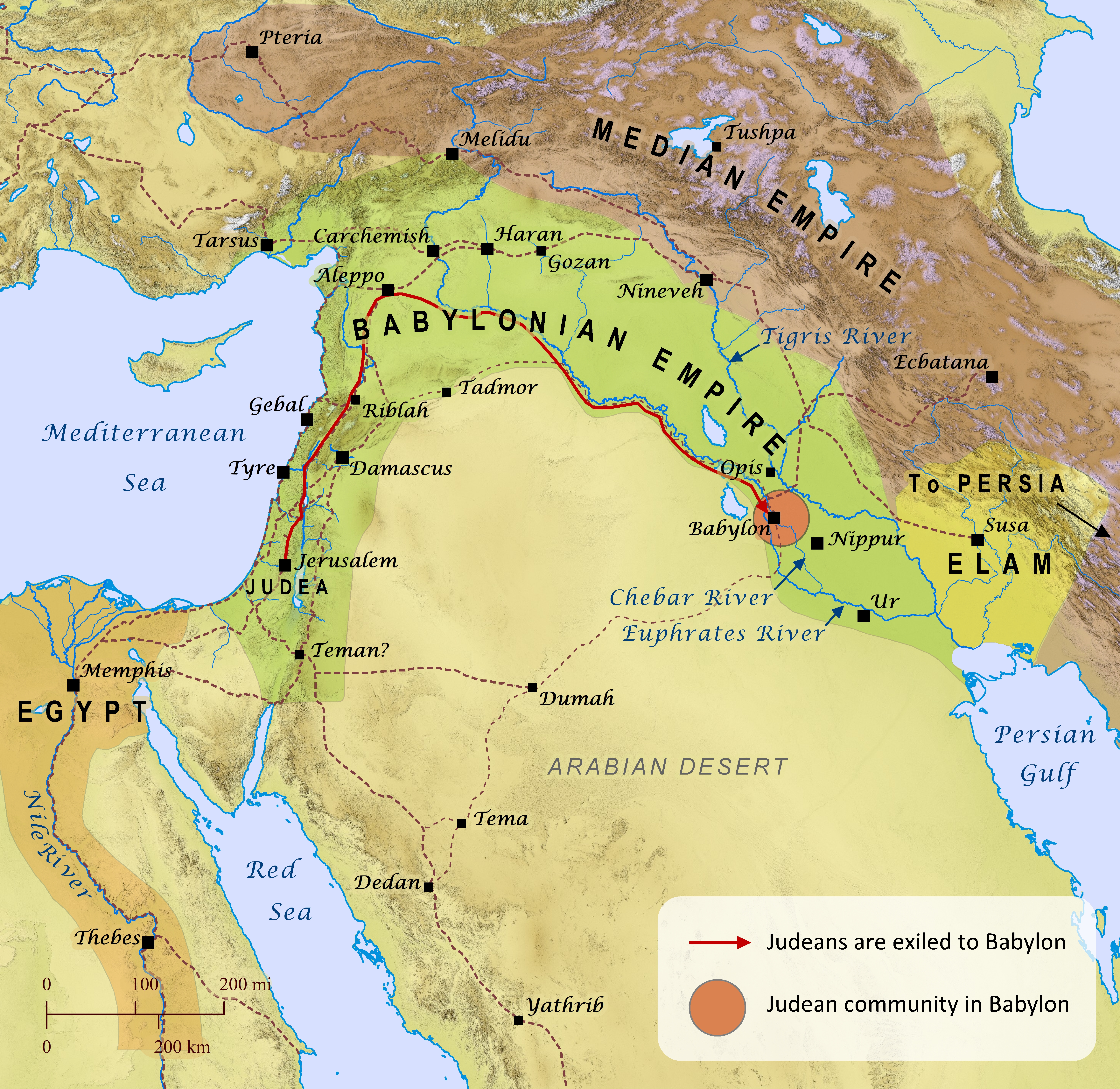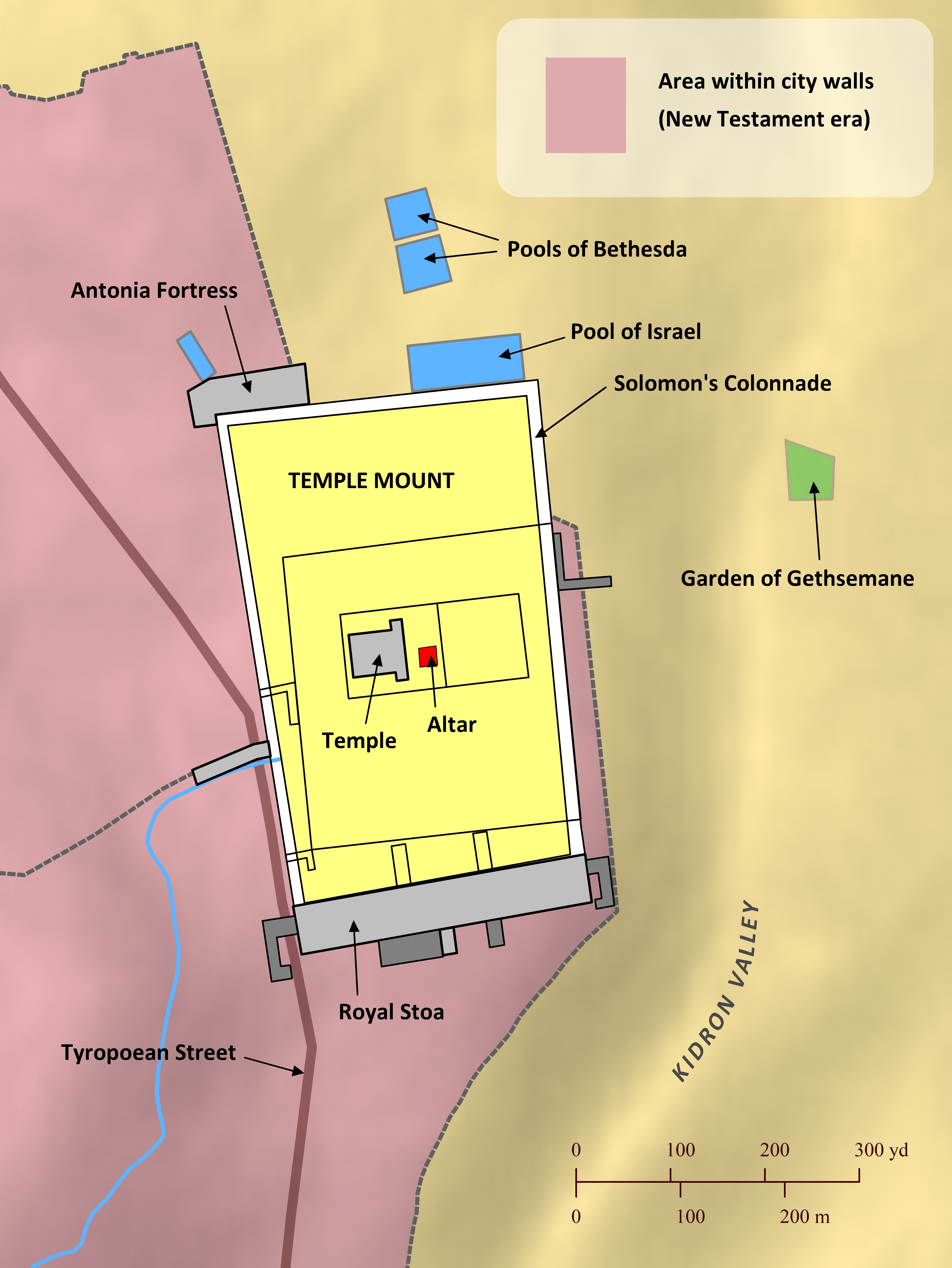Note: This view shows ‘verses’ which are not natural language units and hence sometimes only part of a sentence will be visible—click on any Bible version abbreviation down the left-hand side to see the verse in more of its context. Normally the OET discourages the reading of individual ‘verses’, but this view is only designed as a tool for doing comparisons of different translations—the older translations are further down the page (so you can read up from the bottom to trace the English translation history). The OET segments on this page are still very early looks into the unfinished texts of the Open English Translation of the Bible—please double-check these texts in advance before using in public.
OEB and the king of Babylon put them to death at Riblah in the district of Hamath. Thus was Judah carried from her own land into exile.
WEBBE The king of Babylon struck them, and put them to death at Riblah in the land of Hamath.
¶ So Judah was carried away captive out of his land.
WMBB (Same as above)
NET The king of Babylon ordered them to be executed at Riblah in the territory of Hamath.
¶ So Judah was taken into exile away from its land.
LSV and the king of Babylon strikes them, and puts them to death in Riblah, in the land of Hamath, and he removes Judah from off its own ground.
FBV The king of Babylon had them executed at Riblah in the land of Hamath. So the people of Judah had to leave their land.
T4T There at Riblah in the Hamath region, the king of Babylon commanded that they all be executed.
¶ Many of the people of Judah were ◄forced to leave/exiled from► their own land.
LEB And the king of Babylon struck them down and killed them at Riblah in the land of Hamath. So Judah left from its land.
BBE And the king of Babylon put them to death at Riblah in the land of Hamath. So Judah was taken prisoner away from his land.
Moff No Moff JER book available
JPS And the king of Babylon smote them, and put them to death at Riblah in the land of Hamath. So Judah was carried away captive out of his land.
ASV And the king of Babylon smote them, and put them to death at Riblah in the land of Hamath. So Judah was carried away captive out of his land.
DRA And the king of Babylon struck them, and put them to death in Reblatha, in the land of Emath: and Juda was carried away captive out of his land.
YLT and the king of Babylon smiteth them, and putteth them to death in Riblah, in the land of Hamath, and he removeth Judah from off its own ground.
Drby and the king of Babylon smote them, and put them to death at Riblah in the land of Hamath. Thus Judah was carried away captive out of his land.
RV And the king of Babylon smote them, and put them to death at Riblah in the land of Hamath. So Judah was carried away captive out of his land.
(And the king of Babylon smote them, and put them to death at Riblah in the land of Hamath. So Yudah was carried away captive out of his land. )
SLT And the king of Babel will strike them, and kill them in Riblah in the land of Hamath. And Judah will be carried into exile from his land.
Wbstr And the king of Babylon smote them, and put them to death in Riblah, in the land of Hamath. Thus Judah was carried away captive out of his own land.
KJB-1769 And the king of Babylon smote them, and put them to death in Riblah in the land of Hamath. Thus Judah was carried away captive out of his own land.
(And the king of Babylon smote them, and put them to death in Riblah in the land of Hamath. Thus Yudah was carried away captive out of his own land. )
KJB-1611 And the king of Babylon smote them, and put them to death in Riblah, in the land of Hamath: thus Iudah was caried away captiue out of his owne land.
(Modernised spelling is same as from KJB-1769 above, apart from capitalisation and punctuation)
Bshps And the kyng of Babylon caused them to be put to death at Reblath in the lande of Hemath: And thus Iuda was ledde away captiue out of his owne lande.
(And the king of Babylon caused them to be put to death at Reblath in the land of Hemath: And thus Yudah was led away captive out of his own land.)
Gnva And the king of Babel smote them, and slewe them in Riblah, in the lande of Hamath: thus Iudah was caried away captiue out of his owne land.
(And the king of Babel smote them, and slew/killed them in Riblah, in the land of Hamath: thus Yudah was carried away captive out of his own land. )
Cvdl and the kinge of Babilon caused them to be put to death at Reblatha in the londe of Hemath. And thus Iuda was ledde awaye captyue, out of his owne londe.
(and the king of Babylon caused them to be put to death at Reblatha in the land of Hemath. And thus Yudah was led away captive, out of his own land.)
Wycl And the kyng of Babiloyne smoot hem, and killide hem in Reblatha, in the lond of Emath; and Juda was translatid fro his lond.
(And the king of Babylon smote them, and killed them in Reblatha, in the land of Emath; and Yudah was translated from his land.)
Luth Und der König zu Babel schlug sie tot zu Riblath, die im Lande Hemath liegt. Also ward Juda aus seinem Lande weggeführet.
(And the/of_the king to/for Babel hit/beat(v) they/she/them dead to/for Riblath, the in_the land Hemath lies(v). So what/which Yuda out_of his land led_away.)
ClVg et percussit eos rex Babylonis, et interfecit eos in Reblatha in terra Emath: et translatus est Juda de terra sua.[fn]
(and he_struck them king Babylonis, and he_killed them in/into/on Reblatha in/into/on earth/land Emath: and translatus it_is Yuda from/about earth/land his_own. )
RP-GNT No RP-GNT JER book available
BMM BibleMapper.com Maps:

Daniel 1; 2 Kings 24-25; 2 Chronicles 36; Jeremiah 39; 52
One of the most significant events in the story of the Old Testament is the exile of Judah to Babylon in 586 B.C. This event–actually the third in a series of exiles to Babylon (the others occurring in 605 B.C. and 597 B.C.)–precipitated several crises in the nation and in Judaism. The northern kingdom of Israel had already been exiled to Assyria over a century earlier in 722 B.C. (2 Kings 15:29; 17:1-6; 1 Chronicles 5:26; see also “Israelites Are Exiled to Assyria” map), and in some ways that exile was even more devastating. Nevertheless, the Temple of the Lord remained intact in Jerusalem as a place where the faithful could continue to offer their sacrifices. With the destruction of Jerusalem and the Temple of the Lord at the hands of the Babylonians, however, sacrifices could no longer be offered at the Tabernacle or Temple of the Lord (Leviticus 17:2-4; Deuteronomy 12:5-7), and the Lord’s promise to provide a land for his people and a descendant on the throne of David no doubt seemed abandoned. At the same time, however, the Judean exiles were allowed to maintain their religious traditions in Babylon, and many even began to thrive there, including Daniel and his friends, who served at the royal court (Daniel 1; see also “The Land of Exile” map). One of the last kings of Babylon expanded Babylonia further by capturing the desert oases of Dumah, Tema, Dedan, and Yathrib (see “Oases of the Arabian Desert” map), but eventually the Median Empire to the north merged with the Persian Empire to the southeast and conquered the Babylonian Empire. King Cyrus of Persia then decreed that the exiled Judeans, now called “Jews,” could return to their homeland if they desired (2 Chronicles 36:22-23; Ezra 1-2; see also “Jews Return from Exile” map).

Temple of the Lord
The Temple of the Lord in Jerusalem, where all Israelite males were commanded to offer sacrifices to the Lord (Exodus 23:14-19; Deuteronomy 16:16-17), underwent several stages of reconstruction and development over hundreds of years. The first Temple was built by King Solomon to replace the aging Tabernacle, and it was constructed on a threshing floor on high ground on the north side of the city (2 Samuel 24; 1 Chronicles 21). Hundreds of years later King Hezekiah expanded the platform surrounding the Temple. When Jerusalem fell to the Babylonians in 586 B.C., the Temple was completely destroyed (2 Kings 25:1-21; 2 Chronicles 36:17-21; Jeremiah 39:1-10; 52:1-30). It was rebuilt in 515 B.C. after a group of Jews returned to Judea from exile in Babylon (Ezra 1:5-6:15; Nehemiah 7:5-65). Herod the Great completely rebuilt and expanded the Temple once again around 20 B.C., making it one of the largest temples in the Roman world. Jesus’ first believers often met together in Solomon’s Colonnade, a columned porch that encircled the Temple Mount, perhaps carrying on a tradition started by Jesus himself (John 10:23; Acts 3:11; 5:12). But Herod’s Temple did not last long: After many Jews revolted against Rome, the Romans eventually recaptured Jerusalem and destroyed the Temple in A.D. 70.

